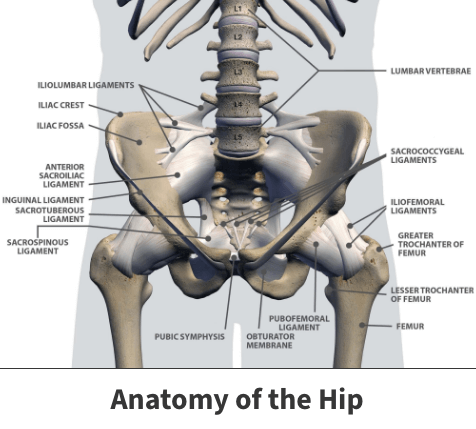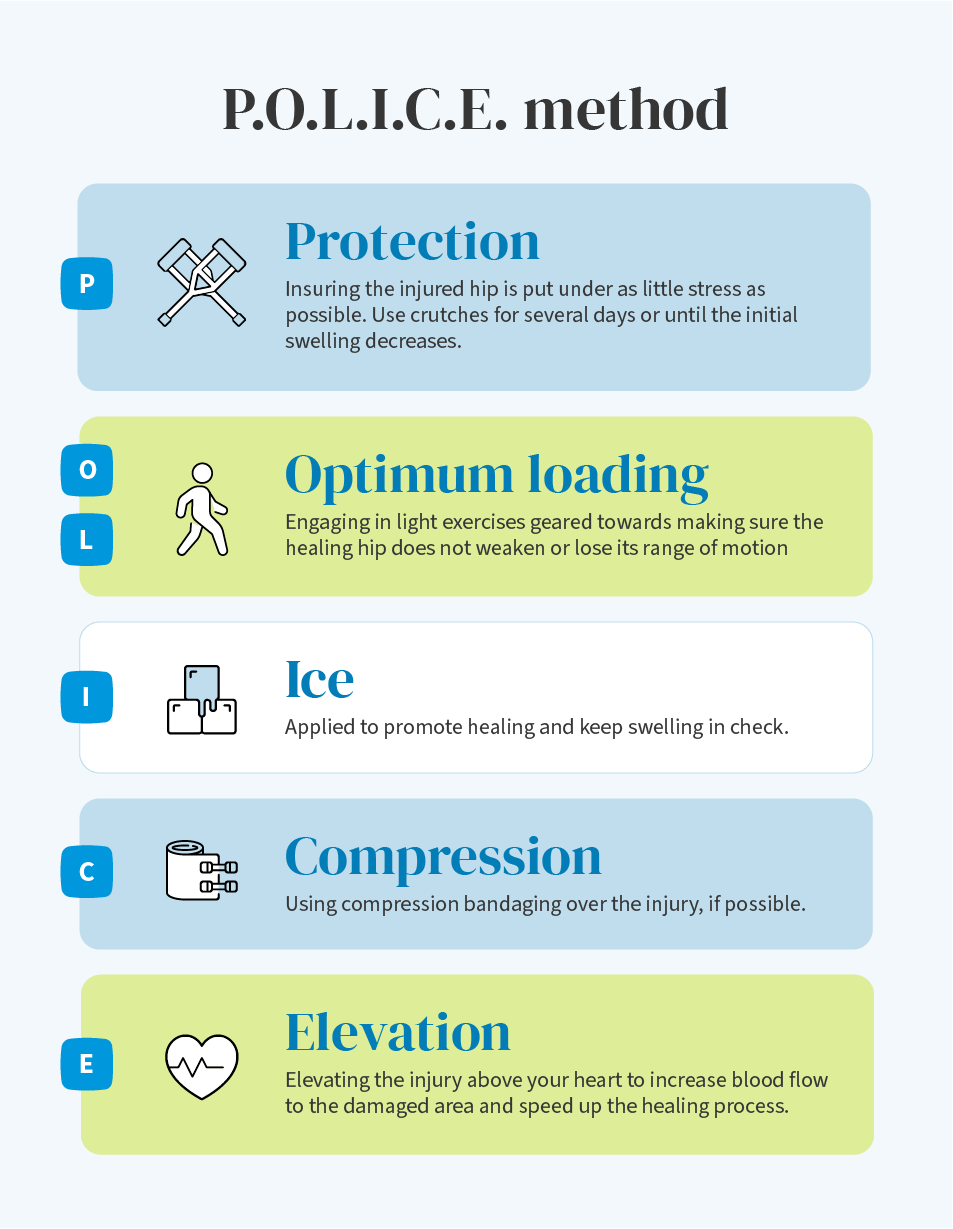Trochanteric bursitis of the hip
Hip pointers
The hips are among the most important joints in your body. Your hips connect important bones, are surrounded by several key muscles, and are responsible for providing a bridge between your upper and lower body.
Hip injuries can be both painful and life-limiting. Two such conditions are hip pointers and trochanteric bursitis.
Anatomy

Your hip joint joins the thigh bone (the femur) with the pelvis. Additionally, the hip is situated close to important muscles, such as the inner thigh muscles (abductors), the buttocks (glutes), leg muscles (quadriceps), and the hamstrings, which can be found on the back of your inner thighs.
The hip itself is also comprised of many complicated structures. One is the iliac crest, which is the largest part of the hip bone. Another is known as the greater trochanter.
About
A hip pointer occurs when you sustain injury to the iliac crest. Trochanteric bursitis occurs when fluid-filled sacs found near the hip joint and greater trochanter (bursa) grow irritated or inflamed.
Causes
Most hip pointers result from some type of traumatic contact with your hip. A large percentage of such injuries can be linked to contact sports. It is not uncommon for these occurrences to happen following events like car accidents or bad falls.
There are several underlying causes for the development of trochanteric bursitis, including:
- The use of incorrect posture
- A traumatic injury
- Participation in activities that place added stress on the hip joint
- Various other hip injuries
- Infections
- Autoimmune disorders
Sometimes, the condition might be brought forth by calcium deposits collecting on surrounding soft tissues.
Risk factors
Your risk for contracting a hip pointer increases significantly should you participate in athletic competitions, such as football, ice hockey, soccer, lacrosse, rugby, and basketball. These injuries often occur because athletes fail to wear proper protective equipment such as padding or taping.
The chances of developing trochanteric bursitis increase if:
- You are employed in a profession or participate in activities that require you to stand or climb for extended periods
- Engage in contact sports
- Have undergone hip surgery
- Have artificial hip implants
- Are female
- Middle-aged or older

Symptoms
The most obvious hip pointer symptom is discomfort. This pain can typically be felt immediately after the injury occurs and is often intense. In some instances, pain is severe enough to limit your ability to carry out simple tasks like walking or even standing.
Hip pointer injuries are medically called contusions – the scientific term for bruising. In a large percentage of cases, bruising and swelling are visible in the affected hip region. You might also experience a limited range of motion in the hip and leg in question.
When experiencing trochanteric bursitis, you may have pronounced hip discomfort. Typically, pain begins in the hip’s outer region and spreads to the buttocks and thigh. These symptoms usually worsen when you lie on the affected hip and engage in more strenuous activities like climbing stairs.
Diagnosis
A hip pointer is typically not difficult to diagnose. In many cases, the problem can be identified during a routine physical examination. Your doctor may order internal imaging tests, such as X-rays, bone scans, and CT scans (computerized tomography), to confirm their suspicions, determine the injury’s severity, or rule out other concerns.
To identify trochanteric bursitis, your doctor will first carefully examine your hip’s pointer region. The condition often leads to swelling in this area. They might also order internal imaging tests to eliminate any other injuries or illnesses producing similar symptoms.
Treatment
Usually, hip pointers respond to nonsurgical treatment options. Trochanteric bursitis also often reacts favorably to non-invasive therapies. Severe occurrences can need surgery.
Nonsurgical options
Typically, a hip pointer will heal using a medical technique nicknamed the POLICE method. This is an abbreviation for Protection, Optimum Loading, Ice, Compression, and Elevation.
- Protection – involves ensuring the injured hip is put under as little stress as possible. You might need to walk using crutches for several days or until the initial swelling decreases.
- Optimum loading – means engaging in light exercises to ensure the healing hip does not weaken or lose its motion range.
- Ice – is applied to promote healing and keep swelling in check.
- Compressing – the injury using a heavy protective covering like bandaging has its benefits. Since the hip is large and situated in an awkward position, compression is not always possible.
- Elevated – When inactive, injured hips should be elevated above your heart. This increases blood flow to the damaged area and speeds up the healing process.

The initial treatment for trochanteric bursitis is like those used to address hip pointers. Icing, resting, elevating, and compressing the injured region often prove effective.
Should more aggressive treatment be required, your doctor may prescribe anti-inflammatory and pain-reducing drugs, order steroid injections, and suggest a prolonged course of physical therapy.
Surgical procedures
Typically, hip pointers heal with standard treatment within one to three weeks and do not need surgery.
The most severe incidents of trochanteric bursitis might need surgical intervention to remove the offending bursa and damaged tissues.
Videos
Related specialties
- Avascular Necrosis (Osteonecrosis)
- Groin Strains & Pulls
- Hamstring Injuries
- Hip Arthroscopy
- Hip Dislocation
- Hip Flexor Strains
- Hip Fractures
- Hip Hemiarthroplasty
- Hip Impingement Labral Tears
- Hip Muscle Strains
- Iliopsoas Tenotomy
- Labral Tears of the Hip (Acetabular Labrum Tears)
- Osteoarthritis of the Hip
- Osteoporosis
- Pelvic Ring Fractures
- Piriformis Syndrome
- Sports Hernias (Athletic Pubalgia)
- Thigh Fractures
- Thigh Muscle Strains
- Total Hip Arthroplasty
- Total Hip Replacement - Anterior Approach
